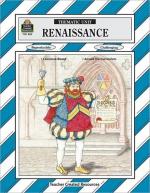|
This section contains 1,291 words (approx. 5 pages at 300 words per page) |

|
Importance of Children. In all religious traditions, the procreation of children was viewed as one of the most important functions of marriage and childless couples were viewed with pity. Childlessness hit women particularly hard, because it was invariably seen as the woman's fault. This unfortunate condition is one of the reasons that suggestions about how to promote fertility through diet, exercise, potions, and charms were extremely common in midwives' manuals and advice books for women. Childless men could test their fertility outside of marriage with little public condemnation (though not officially condoned, adultery—if one's wife was barren—was rarely punished), but childless wives did not have this opportunity.
Pregnancy. Determining whether one was pregnant was not an easy matter, however. The stopping of menstrual periods opened up the possibility, but midwives' manuals and private medical guides cautioned women...
|
This section contains 1,291 words (approx. 5 pages at 300 words per page) |

|




